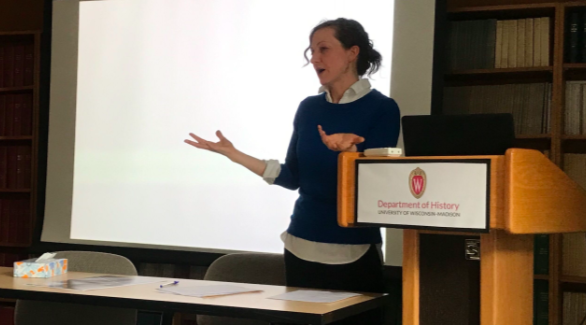Cambridge University lecturer Julia Guarneri discussed the development of American newspapers at the turn of the twentieth century, specifically in Milwaukee, Monday afternoon.
Guarneri chose to focus her study on Milwaukee because big cities like Chicago and New York produced news content and sold it to other cities for consumption, whereas Milwaukee was smaller and bought syndicated content from those bigger cities. Since most cities in the U.S. bought, rather than produced, their own news, she determined that Milwaukee was more representative of the country as a whole.
Guarneri also chose Milwaukee because of its German-American roots, which contributed to the popularity of foreign-language newspapers in the city.
“Milwaukee was also a German-American city, and you can see that in a couple of ways in the newspaper landscape. One is the sheer quantity of German language dailies,” Guarneri said. “There were two in the 1880s, four by the turn of the century. There were years in the 1890s where the German language daily sold more copies than English language dailies in Milwaukee.”
The rise of syndicated materials around the turn of the twentieth century challenged local feature stories in Milwaukee, resulting in less local reporting, Guarneri said.
By the 1910s and 1920s, syndicated materials had become so common that they covered a wide range of topics, including children’s sections, sports, cooking columns and comic strips, Guarneri said.
Guarneri said syndicated news also exposed Milwaukee readers to the American mass culture, including dress patterns and house plans featured in the newspapers.
“Sometimes, syndicated news brought mass culture or standardized culture to Milwaukee without them necessarily knowing it,” Guarneri said.
When asked how to filter local news from standardized news materials, Guarneri said readers just need to be more aware. She added that it’s “not that hard to notice if you pay attention.”


